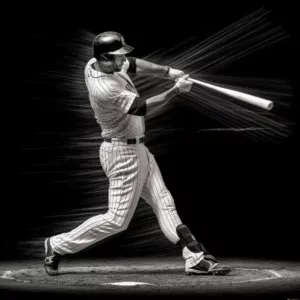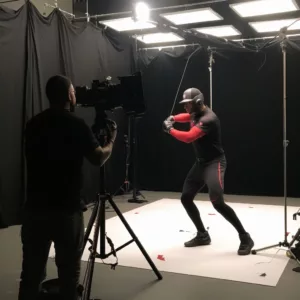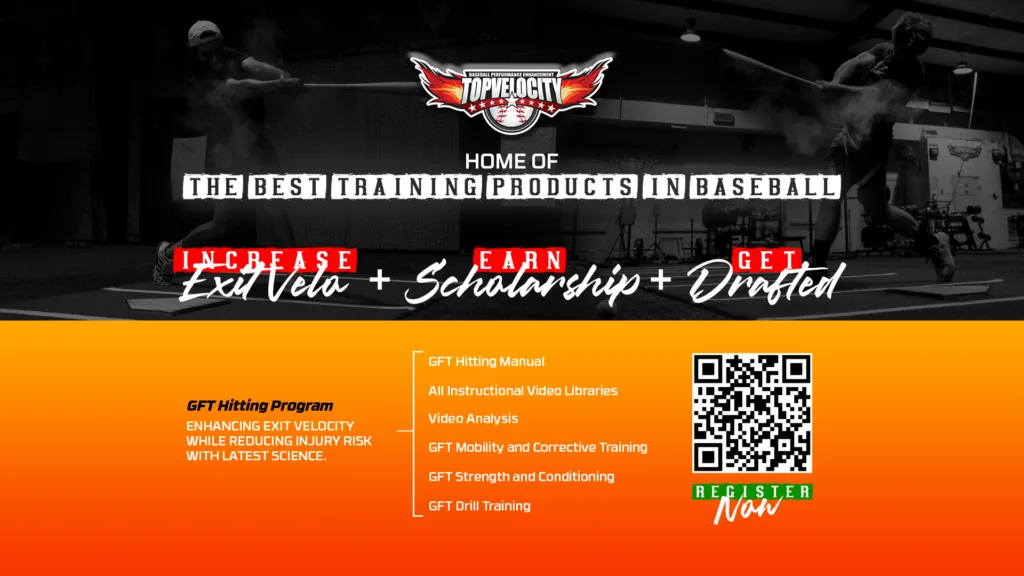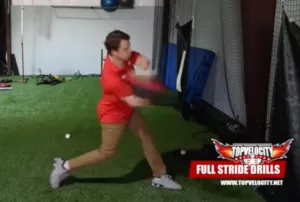 Defining What It Means To Help A Hitter Who Is Too Early
Defining What It Means To Help A Hitter Who Is Too Early
Being "too early" in hitting refers to a situation where a baseball player swings the bat before the ball reaches the optimal hitting zone. This premature action can result in weak contact, foul balls, or complete misses. It often leads to hitting the ball with less power and accuracy, as the player fails to align the bat with the ball at the right moment. Proper timing is essential to harness the full potential of a swing, making early swings a significant hindrance to a player's performance.
Importance of Timing in Baseball Hitting
Timing is a fundamental aspect of successful hitting in baseball. It involves coordinating the swing to meet the ball at the perfect point of contact, allowing for maximum power and precision. Good timing ensures that the energy and momentum built up during the swing are efficiently transferred to the ball, resulting in hard, well-placed hits. Conversely, poor timing can disrupt this transfer of energy, leading to weak hits and missed opportunities. Mastering timing is crucial for hitters at all levels, as it directly impacts their ability to perform consistently and effectively at the plate.
Overview of the Problem
Many hitters struggle with timing, and being too early is a common issue that can be attributed to various factors. This problem can stem from mechanical flaws in the swing, psychological pressures, or difficulties in adjusting to different types and speeds of pitches. When a hitter is too early, it often results in suboptimal contact with the ball, reducing their overall effectiveness and confidence at the plate. Addressing this issue requires a multifaceted approach that considers both the physical and mental aspects of hitting.
Relevance to Different Skill Levels
Timing issues, including being too early, affect hitters across all skill levels, from beginners to advanced players. For beginners, this problem is often related to a lack of fundamental skills and experience. Intermediate players might struggle with timing as they transition to facing faster and more varied pitching. Even advanced players can experience periods where their timing is off, often due to changes in their mechanics or facing particularly challenging pitchers. Understanding and correcting early swings is essential for all hitters, as it helps them to refine their skills and maintain a high level of performance.
Types and Categories: How to Help A Hitter Who Is Too Early
 Timing errors in baseball hitting can vary widely, and understanding the nuances of these errors is crucial for improving performance. Here, we will delve into the types of timing errors and the categories of hitters most commonly affected by these issues.
Timing errors in baseball hitting can vary widely, and understanding the nuances of these errors is crucial for improving performance. Here, we will delve into the types of timing errors and the categories of hitters most commonly affected by these issues.
Types of Timing Errors: How to Help A Hitter Who Is Too Early
- Too Early:
- Description: When a hitter swings the bat before the ball reaches the optimal hitting zone, they are said to be "too early." This often results in the bat making contact with the ball too soon, leading to weak hits or foul balls.
- Consequences: Early swings usually produce ground balls or pop-ups to the pull side of the field. This mistimed contact lacks the power and precision needed for effective hitting.
- Common Scenarios: Hitters may be too early when they are facing slower pitches or when they are overly eager to make contact. This can also occur if a hitter is trying to anticipate the pitch rather than reacting to it.
- Too Late:
- Description: Conversely, when a hitter swings after the ball has already passed the optimal hitting point, they are "too late." This delay can result from hesitation, misjudgment of the pitch speed, or a lack of confidence in the swing.
- Consequences: Late swings often lead to missed pitches or weak hits to the opposite field. These late reactions typically result in strikeouts or weak contact that doesn't drive the ball effectively.
- Common Scenarios: Hitters might swing late when they are uncertain about the pitch type or speed, or when facing very fast pitches. This can also happen if a hitter is overly focused on pitch selection and misses the timing.
 Categories of Hitters Affected: How to Help A Hitter Who Is Too Early
Categories of Hitters Affected: How to Help A Hitter Who Is Too Early
- Beginners:
- Characteristics: Beginners are typically new to the sport and are still developing their fundamental skills. They often lack the experience and muscle memory required for precise timing.
- Common Timing Issues: Beginners frequently struggle with both early and late swings due to their inexperience. They may not yet have developed the ability to read pitches effectively or to execute the correct swing mechanics.
- Improvement Strategies: For beginners, focusing on the basics of hitting, such as proper stance, grip, and swing mechanics, can help. Consistent practice with a variety of pitches can also aid in developing better timing.
- Intermediate Players:
- Characteristics: Intermediate players have some experience and have developed basic skills but are still refining their technique and consistency. They often face more advanced pitching than beginners.
- Common Timing Issues: Intermediate players might experience timing errors when transitioning to faster pitches or when facing more skilled pitchers. They may have periods of inconsistency where they are either too early or too late.
- Improvement Strategies: Intermediate players should focus on improving their pitch recognition and reaction time. Drills that simulate game situations, including facing pitchers with varying speeds and styles, can be beneficial.
- Advanced Players:
- Characteristics: Advanced players have significant experience and have honed their skills over many years of practice and competition. They typically face the most challenging pitching.
- Common Timing Issues: Even advanced players can struggle with timing, especially when adjusting to new pitchers or recovering from slumps. High-velocity pitches and deceptive off-speed pitches can pose challenges.
- Improvement Strategies: Advanced players benefit from advanced training techniques, such as video analysis to fine-tune their mechanics and timing. Mental preparation and maintaining a strong, confident mindset are also crucial for maintaining consistent timing.
Understanding the types of timing errors and the categories of hitters affected allows coaches and players to tailor their training and improvement strategies effectively. Whether a hitter is just starting out or is a seasoned veteran, addressing timing issues is a continuous process that requires dedication and a strategic approach.
Symptoms and Signs: How to Help A Hitter Who Is Too Early
 Identifying the symptoms and signs of being too early in hitting is essential for diagnosing and correcting timing issues in baseball. By recognizing these indicators, coaches and players can take proactive steps to address and improve hitting performance.
Identifying the symptoms and signs of being too early in hitting is essential for diagnosing and correcting timing issues in baseball. By recognizing these indicators, coaches and players can take proactive steps to address and improve hitting performance.
Early Hitting Indicators: How to Help A Hitter Who Is Too Early
- Consistent Fouls to the Opposite Field:
- Description: When hitters frequently foul balls off to the opposite field, it is often a sign that they are swinging too early. This occurs because the bat makes contact with the ball before it reaches the optimal hitting zone.
- Example: A right-handed hitter fouling pitches off to the right side of the field repeatedly during an at-bat.
- Weak Ground Balls to the Pull Side:
- Description: Early swings often result in weak ground balls hit to the pull side of the field. This happens because the bat meets the ball before the hitter can generate full power and follow through correctly.
- Example: A left-handed hitter consistently grounding out to the right side of the infield due to early swings.
- Pop-ups and Fly Balls:
- Description: Another common indicator of early hitting is an increased number of pop-ups and fly balls. These occur because the bat contacts the bottom half of the ball when the swing is too early.
- Example: Hitters frequently hitting high, lazy fly balls that are easy outs for the defense.
Observational Signs in Different Scenarios: How to Help A Hitter Who Is Too Early
- During Batting Practice:
- Scenario: Coaches can observe hitters during batting practice to identify signs of early swings. In this controlled environment, it’s easier to spot patterns and provide immediate feedback.
- Signs: Hitters who are consistently making weak contact or fouling balls off to the opposite field during drills may be swinging too early.
- In Games:
- Scenario: Observations during actual games can reveal timing issues under pressure. Game situations provide a more realistic context for evaluating a hitter's timing.
- Signs: Coaches should look for hitters who struggle to make solid contact in key moments, such as with runners in scoring position, or who frequently make weak outs to the pull side.
- During Simulated Drills:
- Scenario: Simulated game scenarios in practice can help replicate the conditions of a real game. This is useful for diagnosing timing issues in a less pressured setting.
- Signs: In these drills, hitters who are early on pitches may demonstrate the same symptoms as in actual games, allowing coaches to intervene and correct their timing.
 Player Feedback and Self-Awareness: How to Help A Hitter Who Is Too Early
Player Feedback and Self-Awareness: How to Help A Hitter Who Is Too Early
- Feeling Out of Sync:
- Description: Hitters often have an internal sense of when their timing is off. They may describe feeling out of rhythm or unable to get into a proper hitting flow.
- Example: A player might report that they feel like they are rushing their swing or not waiting long enough for the pitch.
- Acknowledging Timing Issues:
- Description: Self-aware players may recognize and verbalize their timing problems. They can provide valuable insights into their experiences and help coaches understand their struggles.
- Example: A hitter might tell their coach, "I feel like I'm always ahead of the pitch," indicating an awareness of their tendency to swing too early.
- Physical Cues:
- Description: Players may also notice physical cues that indicate early swings, such as feeling off-balance or not following through properly.
- Example: A player might notice they are frequently off-balance after swings or that their follow-through feels cut short.
- Feedback from Teammates:
- Description: Teammates can also provide feedback on timing. Fellow players who observe a hitter’s performance regularly may notice patterns that the hitter themselves might miss.
- Example: A teammate might point out, "You seem to be ahead of every pitch," offering an external perspective on the timing issue.
Recognizing these symptoms and signs is the first step in addressing early hitting. By combining observational analysis, player feedback, and self-awareness, coaches and hitters can develop targeted strategies to improve timing and overall hitting performance.
Causes and Risk Factors: How to Help A Hitter Who Is Too Early
 Understanding the causes and risk factors behind early swings is crucial for diagnosing and addressing the issue effectively. These causes can be categorized into mechanical, psychological, and environmental factors.
Understanding the causes and risk factors behind early swings is crucial for diagnosing and addressing the issue effectively. These causes can be categorized into mechanical, psychological, and environmental factors.
Mechanical Causes
- Poor Footwork:
- Description: Proper footwork is fundamental to maintaining balance and timing during a swing. Inconsistent or incorrect foot placement can lead to premature weight transfer, causing the hitter to swing early.
- Impact: When a hitter’s feet are not correctly positioned or timed, it disrupts the kinetic chain that powers the swing. This can result in a lack of control and precision, making it difficult to adjust to the pitch properly.
- Example: A hitter who steps out too soon or fails to properly transfer weight from the back foot to the front foot may find themselves ahead of the pitch, leading to early contact.
- Inconsistent Hand-Eye Coordination:
- Description: Hand-eye coordination is critical for tracking the ball from the pitcher’s hand to the point of contact. Difficulty in this area can cause a hitter to misjudge the timing and location of the pitch.
- Impact: Poor hand-eye coordination can make it challenging to wait for the ball to enter the hitting zone, resulting in swings that are too early.
- Example: A hitter who struggles to follow the ball’s trajectory accurately might initiate their swing prematurely, leading to weak or missed contact.
Psychological Factors
- Anxiety:
- Description: Nervousness and anxiety at the plate can cause a hitter to rush their actions. The pressure to perform well can lead to hastened decision-making and early swings.
- Impact: Anxiety disrupts a hitter’s focus and composure, making it harder to wait for the right moment to swing. This can be especially prevalent in high-pressure situations.
- Example: A hitter feeling anxious with runners in scoring position might start their swing too early in an attempt to avoid missing the pitch, resulting in poor contact.
- Over-anticipation:
- Description: Over-anticipation occurs when a hitter tries to predict the type and location of the pitch rather than reacting to it. This often leads to premature swings.
- Impact: Anticipating the pitch incorrectly can cause the hitter to commit to a swing too early, especially if the pitch is slower or in a different location than expected.
- Example: A hitter expecting a fastball but receiving a changeup may swing too soon, as they have preemptively started their swing based on an incorrect assumption.
Environmental Factors
- Pitch Speed Variations:
- Description: Variations in pitch speed, such as transitioning from a fastball to an off-speed pitch, can throw off a hitter’s timing.
- Impact: Different speeds require different timing adjustments. A hitter who does not adequately adjust to the speed of the pitch will likely swing too early or too late.
- Example: After seeing several fastballs, a hitter may be too early on a slower curveball because their timing is set for a higher velocity pitch.
- Pitch Types:
- Description: Off-speed pitches like curveballs, changeups, and sliders are designed to disrupt the hitter’s timing. These pitches are particularly challenging because they look similar to fastballs but arrive at a slower speed or with different movement.
- Impact: These pitch types can cause hitters to misjudge the timing and swing too early. Recognizing and adjusting to these pitches is a skill that requires experience and practice.
- Example: A hitter might be too early on a changeup if they are expecting a fastball, resulting in weak contact or a miss.
By understanding these mechanical, psychological, and environmental factors, coaches and players can better diagnose the causes of early swings and implement targeted strategies to improve timing and overall hitting performance. Addressing these causes requires a combination of physical adjustments, mental conditioning, and adaptive practice techniques.
Diagnosis and Tests: How to Help A Hitter Who Is Too Early
 Accurately diagnosing the causes of early swings in baseball requires a combination of observational techniques, technology, and feedback from experienced individuals. Here are some effective methods for diagnosing timing issues in hitters:
Accurately diagnosing the causes of early swings in baseball requires a combination of observational techniques, technology, and feedback from experienced individuals. Here are some effective methods for diagnosing timing issues in hitters:
Video Analysis: How to Help A Hitter Who Is Too Early
- Slow-Motion Review:
- Description: Slow-motion video analysis allows coaches and players to break down the swing frame by frame. This detailed examination can highlight specific moments when the hitter is initiating their swing too early.
- Process: Set up high-speed cameras during batting practice or games to record the hitter’s movements. Review the footage in slow motion, paying close attention to the hitter’s footwork, hand position, and bat path.
- Benefits: By analyzing the swing in slow motion, coaches can pinpoint the exact mechanics that lead to early swings. This visual feedback is invaluable for making precise adjustments.
- Side-by-Side Comparisons:
- Description: Comparing a hitter’s swing with that of a properly timed swing can provide clear visual evidence of the differences.
- Process: Record swings of hitters with good timing and place these recordings side-by-side with the hitter experiencing timing issues. Compare the mechanics, timing, and overall movement patterns.
- Benefits: This method allows the hitter to see and understand the discrepancies in their technique, making it easier to correct errors.
Bat Speed and Reaction Time Measurement: How to Help A Hitter Who Is Too Early
- Technology Tools:
- Description: Modern technology provides tools like bat sensors and reaction time apps to measure key metrics that influence hitting performance.
- Process: Attach sensors to the bat to track bat speed, angle, and swing path. Use reaction time apps to test the hitter’s ability to react to different pitches.
- Benefits: These tools provide quantifiable data that can be analyzed to identify specific areas of improvement. For example, consistent measurements of slower bat speed can indicate a need for strength training or technique adjustments.
- Performance Metrics:
- Description: Assessing performance metrics such as bat speed consistency and reaction times helps in understanding the physical capabilities of the hitter.
- Process: Regularly measure and record the hitter’s bat speed and reaction time during practice sessions. Look for patterns or deviations that correlate with early swings.
- Benefits: By monitoring these metrics, coaches can develop tailored training programs to improve specific weaknesses, such as increasing bat speed or enhancing reaction time.
 Coach and Peer Feedback: How to Help A Hitter Who Is Too Early
Coach and Peer Feedback: How to Help A Hitter Who Is Too Early
- Direct Observations:
- Description: Coaches use their experience and expertise to observe hitters and provide immediate feedback on their timing and mechanics.
- Process: During batting practice and games, coaches should watch for signs of early swings, such as body position, swing path, and contact point. Provide constructive feedback and corrections on the spot.
- Benefits: Real-time feedback allows for immediate adjustments, helping hitters to correct their timing issues more quickly.
- Peer Reviews:
- Description: Teammates who observe each other’s at-bats can offer valuable insights and support.
- Process: Encourage a culture of peer feedback where players watch each other’s swings and share observations. Teammates can often spot timing issues and offer practical advice based on their own experiences.
- Benefits: Peer feedback fosters a collaborative learning environment. Hearing advice from fellow players can sometimes resonate more strongly and be more relatable than coach feedback.
Integrating Diagnosis and Tests into Training: How to Help A Hitter Who Is Too Early
 Combining these diagnostic methods can provide a comprehensive understanding of a hitter’s timing issues. Using video analysis, bat speed and reaction time measurement, and feedback from coaches and peers allows for a well-rounded approach to identifying and correcting early swings. Here’s how to integrate these methods into a training program:
Combining these diagnostic methods can provide a comprehensive understanding of a hitter’s timing issues. Using video analysis, bat speed and reaction time measurement, and feedback from coaches and peers allows for a well-rounded approach to identifying and correcting early swings. Here’s how to integrate these methods into a training program:
- Initial Assessment:
- Begin with a thorough video analysis to identify mechanical flaws.
- Measure bat speed and reaction times to establish baseline performance metrics.
- Gather feedback from coaches and peers to get a holistic view of the hitter’s issues.
- Targeted Training:
- Use the data from the initial assessment to create a personalized training plan.
- Focus on improving identified weaknesses, such as enhancing hand-eye coordination or adjusting footwork.
- Regular Monitoring:
- Continuously monitor progress through periodic video analysis and metric measurements.
- Maintain open communication with coaches and teammates to ensure ongoing feedback.
- Adjustments and Refinements:
- Make adjustments to the training plan based on progress and feedback.
- Use side-by-side comparisons regularly to visually reinforce improvements and remaining issues.
By systematically diagnosing and addressing early swings through these methods, hitters can make significant strides in improving their timing and overall performance at the plate.
TopVelocity Treatment Options: How to Help A Hitter Who Is Too Early
 Addressing early swings in baseball hitting requires a comprehensive approach that combines mechanical adjustments, specialized drills, and strength training. TopVelocity offers several innovative treatment options designed to help hitters improve their timing and overall performance.
Addressing early swings in baseball hitting requires a comprehensive approach that combines mechanical adjustments, specialized drills, and strength training. TopVelocity offers several innovative treatment options designed to help hitters improve their timing and overall performance.
GFT Hitting Mechanical Adjustments
- Footwork and Stance:
- Description: Proper footwork and stance are critical for maintaining balance and timing. Adjustments to these elements can help prevent early swings.
- Technique: Focus on ensuring a stable and consistent stance that allows for smooth weight transfer from the back foot to the front foot. Emphasize the importance of proper stride length and direction.
- Hand Position and Swing Path:
- Description: Correcting the hand position and swing path can significantly improve timing and contact quality.
- Technique: Work on keeping the hands back and maintaining a direct path to the ball. Avoid casting the hands out too early, which can lead to premature swings.
GFT Med Ball Drills
- GFT Med Balls:
- Description: GFT Med Balls are 2-pound weighted balls used to load the trunk and arms, promoting proper sequencing in the swing.
- Benefits: These drills help hitters develop the strength and coordination needed to prevent flying open and maintain a compact, powerful swing.
- Drill Examples:
- Med Ball Linear Throws: Focus is on lower half driving hips to ball to trigger trunk rotation.
- Med Ball Torsion Throws: Focus is adding rotation to the lower half without losing the linear drive. This is better at preventing the trunk from aggressive trying to over power the movement in rotation.
GFT Tee Drills
- Purpose and Benefits:
- Description: Tee drills provide a controlled environment to work on swing mechanics and timing without the pressure of a moving pitch.
- Technique: Set up the tee at different heights and positions to simulate various pitch locations. Focus on maintaining proper mechanics and timing with each swing.
- Drill Examples:
- Linear Tee Drills: Focus is transferring the Med Ball mechanics to the bat.
- Torsion Tee Drills: Focus is transferring the Med Ball mechanics to the bat.
 GFT Trunk Excelelator
GFT Trunk Excelelator
- Device Description:
- Description: The GFT Trunk Excelelator is a specialized device designed to restrict premature hand movements during the swing.
- Benefits: This device helps hitters develop better trunk rotation and prevents early hand activation, promoting a more efficient kinetic chain.
- Usage: Wear the Trunk Excelelator during practice swings to reinforce the correct sequencing of body movements. Focus on rotating the trunk fully before the hands start the swing.
GFT Strength Training
- Leg and Core Strength Development:
- Description: Building leg and core strength is essential for controlling the kinetic chain and generating power.
- Benefits: Stronger legs and core muscles help stabilize the body and provide a solid foundation for the swing.
- Training Examples:
- Squats and Deadlifts: Develop lower body strength and stability.
- Planks and Russian Twists: Enhance core strength and rotational power.
- Olympic Lifting:
- Description: Olympic lifting techniques train the kinetic chain to efficiently transfer energy from the ground up.
- Benefits: These exercises improve explosive power and coordination, which are crucial for effective hitting.
- Training Examples:
- Clean and Jerk: Focus on explosive leg drive and full-body coordination.
- Snatch: Emphasize quick, powerful movements and balance.
Adjusting to Different Pitches
- Pitch Recognition Drills:
- Description: Improving pitch recognition helps hitters adjust their timing based on the type and speed of the pitch.
- Technique: Practice identifying different pitches out of the pitcher’s hand and reacting accordingly.
- Drill Examples:
- Pitch Recognition Games: Use video simulations or live batting practice with a focus on identifying pitch types.
- Soft Toss with Variations: Mix in different speeds and angles to simulate game conditions.
- Simulated Game Scenarios:
- Description: Create practice sessions that mimic real-game situations to help hitters adjust to varying pitch types and speeds.
- Technique: Use live pitching or pitching machines to simulate different scenarios, including off-speed pitches and high-velocity fastballs.
- Drill Examples:
- Mixed Pitch Batting Practice: Alternate between fastballs, curveballs, and changeups to improve timing and adaptability.
- Count-Based Drills: Practice hitting in different counts to simulate game pressure and decision-making.
By integrating these TopVelocity treatment options into a hitter’s training regimen, players can effectively address early swings and develop a more balanced, powerful, and consistent approach at the plate. Each component targets specific aspects of the swing, from mechanics to strength and pitch recognition, ensuring comprehensive improvement in hitting performance.
Get Started with the GFT Hitting Program Today!

 Unlock your full hitting potential with the GFT Hitting Program! Designed by TopVelocity, the King of the Swing, this program is the ultimate solution for preventing the dreaded "flying open" issue and enhancing your exit velocity. With a comprehensive approach that includes mechanical adjustments, specialized med ball drills, tee drills, and strength training, the GFT Hitting Program will transform your game.
Unlock your full hitting potential with the GFT Hitting Program! Designed by TopVelocity, the King of the Swing, this program is the ultimate solution for preventing the dreaded "flying open" issue and enhancing your exit velocity. With a comprehensive approach that includes mechanical adjustments, specialized med ball drills, tee drills, and strength training, the GFT Hitting Program will transform your game.
Don’t miss out on this opportunity to elevate your hitting performance. Visit topvelocity.net/gft and take the first step towards becoming the hitter you’ve always wanted to be. Join the ranks of elite hitters and start dominating at the plate today!


 Categories of Hitters Affected: How to Help A Hitter Who Is Too Early
Categories of Hitters Affected: How to Help A Hitter Who Is Too Early Player Feedback and Self-Awareness: How to Help A Hitter Who Is Too Early
Player Feedback and Self-Awareness: How to Help A Hitter Who Is Too Early Coach and Peer Feedback: How to Help A Hitter Who Is Too Early
Coach and Peer Feedback: How to Help A Hitter Who Is Too Early GFT Trunk Excelelator
GFT Trunk Excelelator

